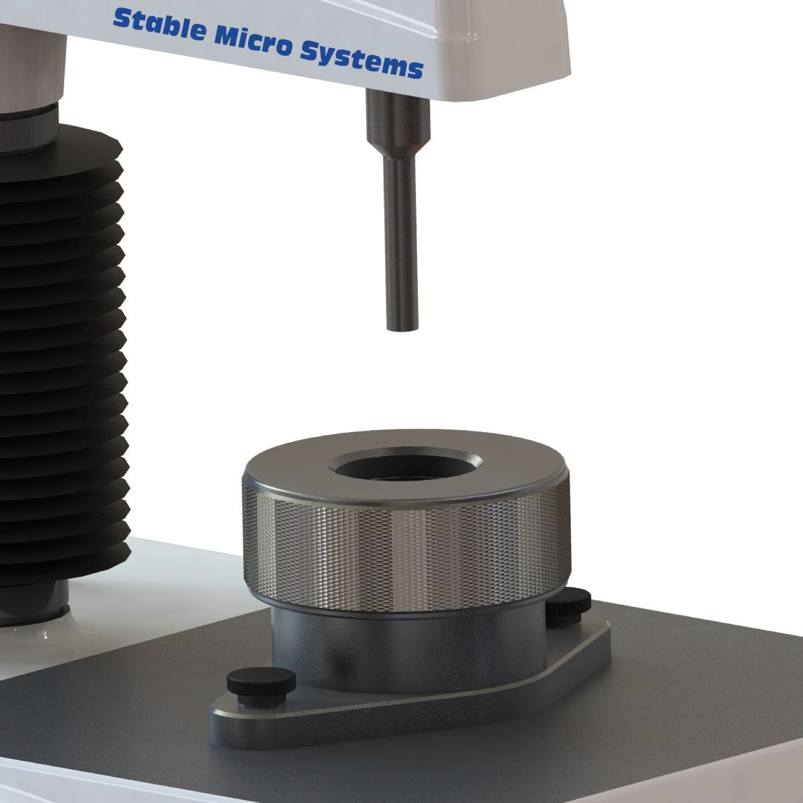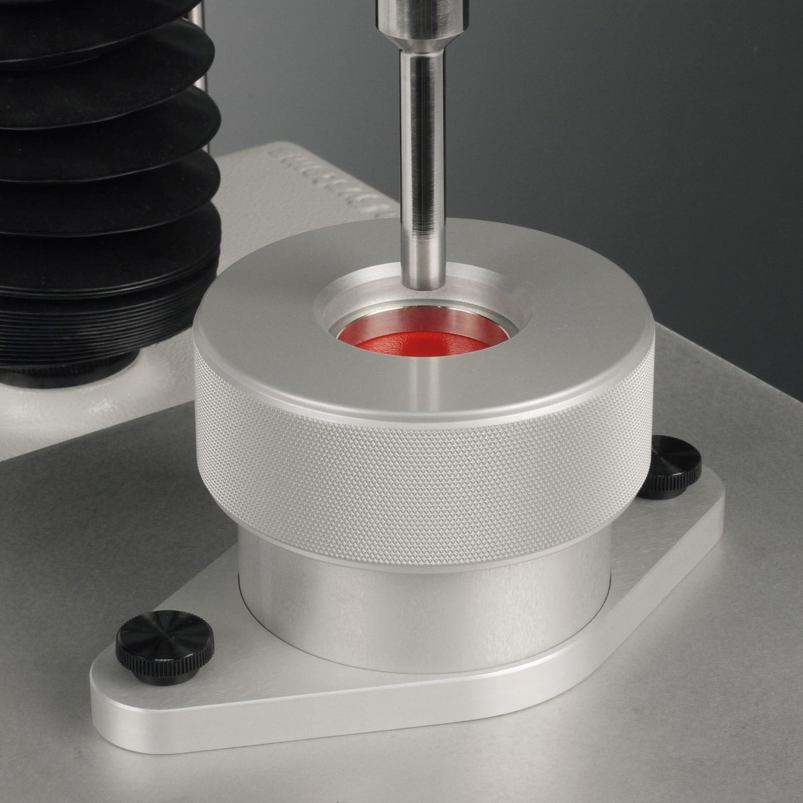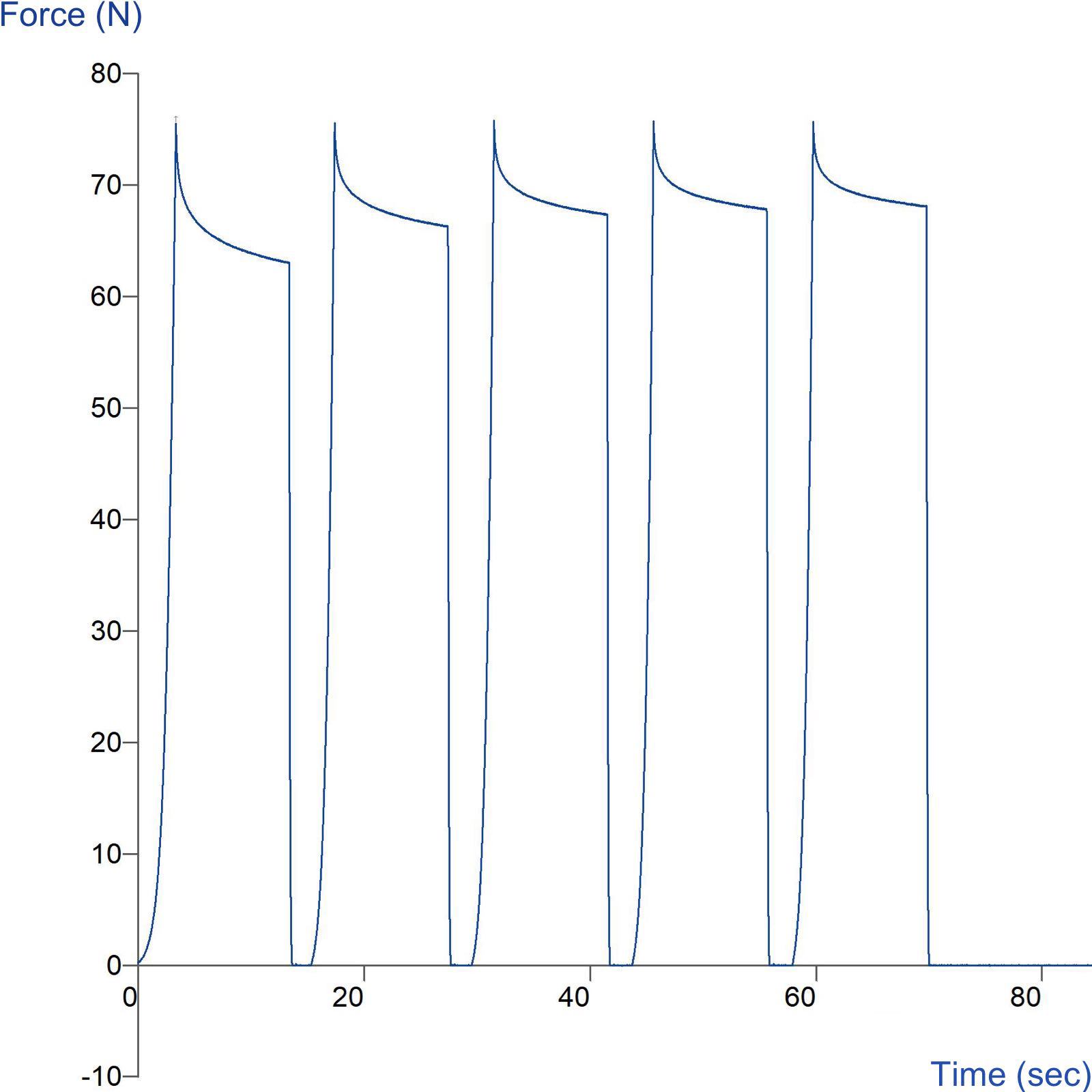Product overview
Leather is a viscoelastic material, meaning that after a force has been applied to it, the material stretches and does not recover 100% to its original form, i.e. there is a degree of permanent deformation. The Bagginess Test Rig meets the CEN standard for determining the bagginess of leather together with its creep and stress relaxation properties after repeated loading. Bagginess is the permanent deformation or retained set in the material measured after the removal of a defined force applied for a specific time.
The specimen is clamped between two rings to create a 'drum skin'. A probe applies a load of 75N to the surface of the specimen. This is repeated 5 times. After the 5th cycle the specimen is allowed 60s to relax, after which time the probe moves down to measure the position of the surface of the sample. From this data the bagginess, creep and relaxation of the specimen is determined.
This method uses settings and analysis in accordance to CEN/TS 14689:2006. It is advised to refer to the original document for full details.
Ideal sample form
Rigid material that can be supported over an orifice.
Technical information
Installation
Full installation instructions are provided within the Education Zone of the latest Exponent/Connect software version and on the technical information sheet accompanying this product.
Chemical compatibility
Stable Micro Systems probes and attachments are commonly made from four materials: anodised aluminium (AA6082 T6), stainless steel (316 T), Delrin (acetyl copolymer) and Perspex (polycarbonate).
In general use, probes and attachments made from these materials will be suitable for testing food products and inert non-food materials.
The four materials listed above are not universally resistant to all types of chemicals and as such the compatibility of the probe/attachment material with the product (to be tested) must be established to prevent damage to the probes and attachments. If the compatibility of the product with the probe is unknown to the customer then the chemical information about the product (Material Safety Data Sheet or Product Data Sheet) should be submitted to Stable Micro Systems. Stable Micro Systems will then assess the suitability of the probe/attachment material for use with the product and advise accordingly. If this advice is not sought then Stable Micro Systems will not accept liability for probes/attachments damaged by chemical attack from the product being tested.
Cleaning and maintenance
All probes and attachments may be cleaned in warm (or hand hot) water using a mild detergent. A soft brush may be used but abrasive cleaning aids should be avoided. Stable Micro Systems products should not be microwaved or cleaned in a dishwasher.
Screw threads should be lightly lubricated after drying using a light lubricant, e.g. petroleum jelly, mineral oil. This will aid the fitting and unscrewing of the item. Each component of a probe or attachment should be wrapped separately when stored, to avoid scratching or chipping. This will safeguard against any unnecessary damage to the accessory.



